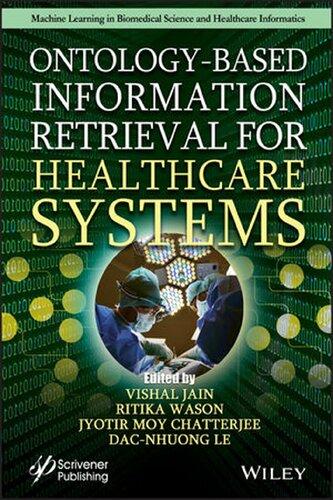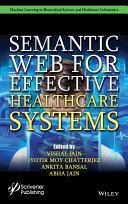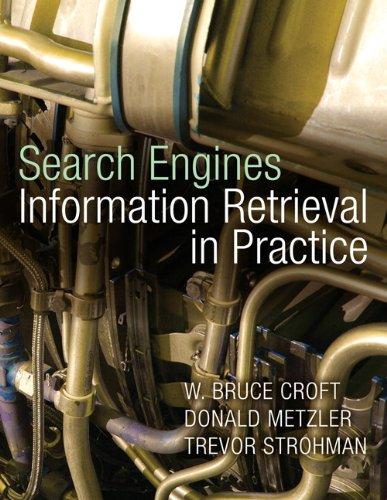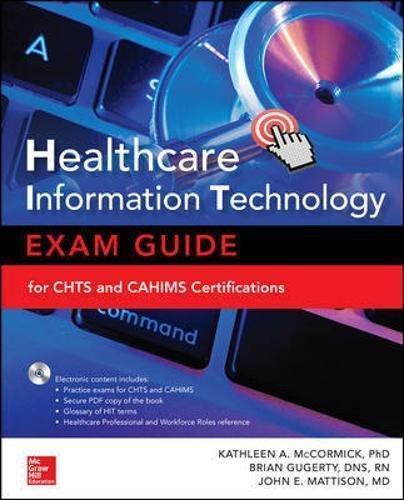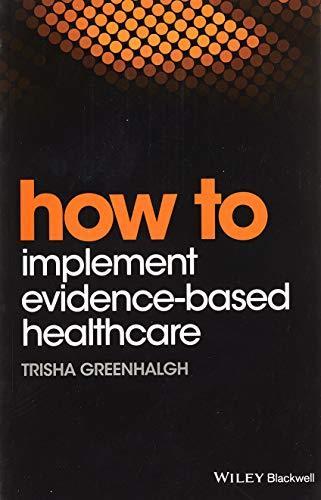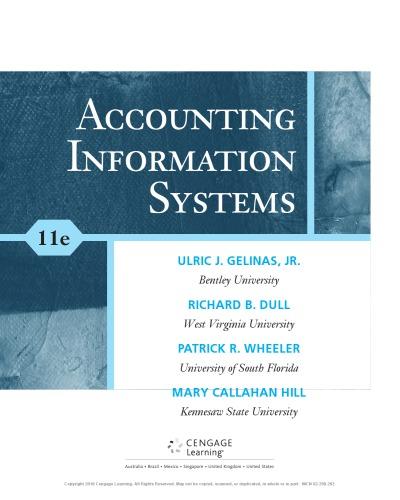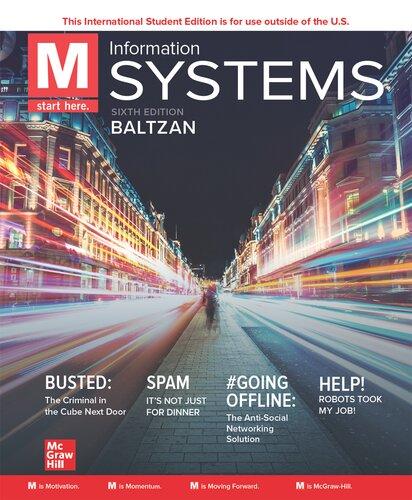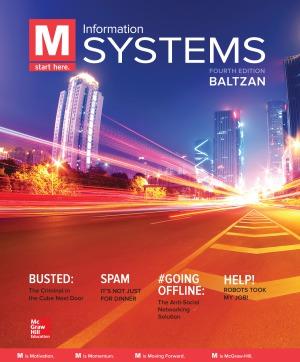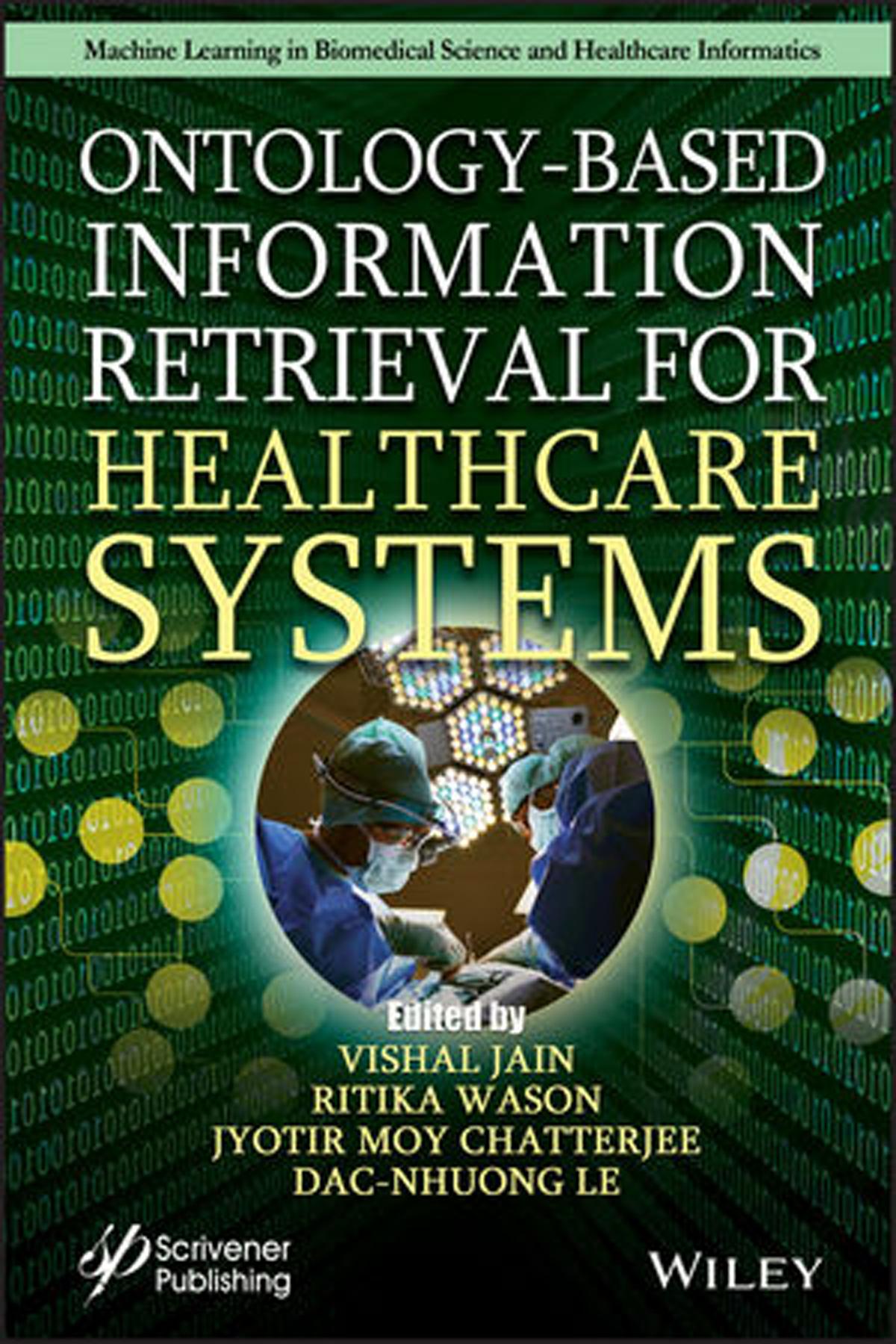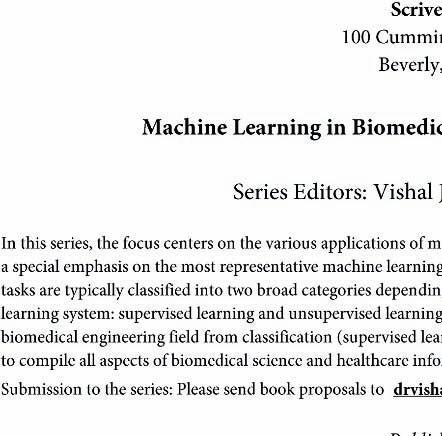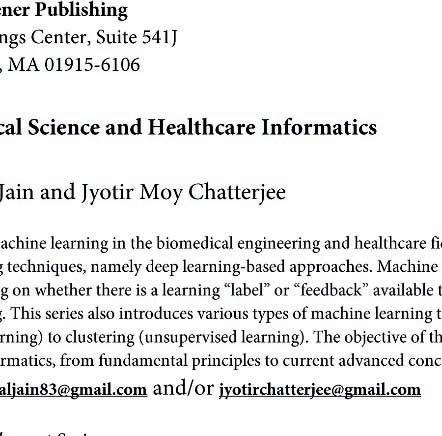Ontology-Based Information Retrieval for Healthcare Systems
Edited by Vishal Jain
Bharati Vidyapeeth,s Institute of Computer Applications and Management (BVICAM), New Delhi, India
Ritika Wason
Bharati Vidyapeeth,s Institute of Computer Applications and Management (BVICAM), New Delhi, India
Jyotir Moy Chatterjee
Lord Buddha Education Foundation, Kathmandu, Nepal and
Dac-Nhuong Le
Faculty of Information Technology, Haiphong University, Haiphong, Vietnam
This edition first published 2020 by John Wiley & Sons, Inc., 111 River Street, Hoboken, NJ 07030, USA and Scrivener Publishing LLC, 100 Cummings Center, Suite 541J, Beverly, MA 01915, USA © 2020 Scrivener Publishing LLC
For more information about Scrivener publications please visit www.scrivenerpublishing.com.
All rights reserved. No part of this publication may be reproduced, stored in a retrieval system, or transmitted, in any form or by any means, electronic, mechanical, photocopying, recording, or otherwise, except as permitted by law. Advice on how to obtain permission to reuse material from this title is available at http://www.wiley.com/go/permissions.
Wiley Global Headquarters
111 River Street, Hoboken, NJ 07030, USA
For details of our global editorial offices, customer services, and more information about Wiley products visit us at www.wiley.com.
Limit of Liability/Disclaimer of Warranty
While the publisher and authors have used their best efforts in preparing this work, they make no representations or warranties with respect to the accuracy or completeness of the contents of this work and specifically disclaim all warranties, including without limitation any implied warranties of merchantability or fitness for a particular purpose. No warranty may be created or extended by sales representatives, written sales materials, or promotional statements for this work. The fact that an organization, website, or product is referred to in this work as a citation and/or potential source of further information does not mean that the publisher and authors endorse the information or services the organization, website, or product may provide or recommendations it may make. This work is sold with the understanding that the publisher is not engaged in rendering professional services. The advice and strategies contained herein may not be suitable for your situation. You should consult with a specialist where appropriate. Neither the publisher nor authors shall be liable for any loss of profit or any other commercial damages, including but not limited to special, incidental, consequential, or other damages. Further, readers should be aware that websites listed in this work may have changed or disappeared between when this work was written and when it is read.
Library of Congress Cataloging-in-Publication Data
ISBN 978-1-119-64048-6
Cover image: Pixabay.Com
Cover design by Russel Richardson
Set in size of 11pt and Minion Pro by Manila Typesetting Company, Makati, Philippines
To our Parents & Well Wishers
5.5
5.3.2
6.5
6.6
6.7
5.4.1
5.4.3
6.3.4
11 Machine Learning Techniques Best for Large
Tshepiso Larona Mokgetse
15 Tools and Techniques for Streaming Data: An Overview
K. Saranya, S. Chellammal and Pethuru Raj Chelliah
15.1
Preface
With the advancements of semantic web, ontology has become the crucial mechanism for representing concepts in varied domains. For research and dispersal of customized healthcare services, a major challenge is to efficiently retrieve and analyze individual patient data from a large volume of heterogeneous data over a long-time span. This demands effective ontology-based information retrieval approaches for clinical information systems. Further, Information Retrieval (IR) since its inception has matured into an established mechanism for facilitating fast and relevant information retrieval. However, mining relevant information from large amount of distributed data demands understanding the semantics of the desired information using ontology.
Further, with the growth in digital literature, effective search and retrieval of desired documents in the healthcare domain has become challenging. The pages displayed by search engines may not always be relevant. The medical field offers restricted vocabularies that encapsulate semantic information about various biomedical models, their semantic types, and the relationships among them. The current web standard does not support Semantic Web technology. Information retrieval is fundamentally based on keyword-matching approaches. The fact that individuals use diverse terms to denote the same object presents a significant challenge in the healthcare industry.
Healthcare is one of the finest represented subject areas on the Semantic Web currently. Textual query is transformed into a set of representative concepts matched to the indexed documents. End users still have to search for apt documents manually. Hence, the detection of pertinent information becomes a critical task.
This book is an attempt to highlight the key advances in ontology-based information retrieval techniques especially being applied in the healthcare domain. The varied chapters attempt to uncover the current challenges in the application of ontology-based information retrieval techniques to the healthcare systems. The book shall be a first of its kind that shall highlight
only the ontology-driven information retrieval mechanisms and techniques being applied to healthcare as well as clinical information systems.
The book can serve as a potential textbook for courses in healthcare systems as well as technologies. It can also serve as a reference book to medical practitioners as well as researchers involved in implementing as well as providing customized health care solutions to patients.
Chapter 1 discusses in details about the roles and responsibilities ontology is playing in terms of healthcare sector.
Chapter 2 provides the relation between neurodegenerative diseases and basal ganglia; the present basal ganglia models stimulate research interest in understanding its functioning to provide different neurosurgical interventions.
Chapter 3 tried an attempt that is made to combine the PSO and PAWbased techniques without sacrificing the usefulness factor.
Chapter 4 discusses about the role of medical oncology as a database management system.
Chapter 5 presents the role of IoT and SWT and usage in addressing the concerns of health and medical sector along with their challenges, various applications, and the future research scope they offer.
Chapter 6 discusses on a Formal Contextual Security Privacy model for healthcare application with aim to provide services in the secure manner.
Chapter 7 presents in details about the ontology-based query retrieval system for E-healthcare.
Chapter 8 discusses an ontology system for a case-based reasoning system that aims at supporting people facing autism spectrum disorders (ASD).
Chapter 9 presents the notion of ontology engineering that involves the major ontology developmentvt methodologies, ontology languages, and ontology tools.
Chapter 10 discusses the content-oriented view and functional view perspectives and presents the major biomedical ontologies and the biomedical Ontology-based systems.
Chapter 11 explains machine learning prediction techniques that are the most effective tools for predicting massive cancer data prediction.
Chapter 12 discusses about the need of ontology-based system in healthcare systems.
Chapter 13 examines and investigates the difficulties related with this new pattern of information retrieval utilizing psychological insightful techniques with focus on medical sectors.
Chapter 14 reviews future IoT-based medicinal service frameworks to gather medical ontologies, which can be applied to generic frameworks.
Chapter 15 after a survey, the available techniques are categorized into traditional streaming data techniques, data mining streaming techniques, and big data techniques for streaming data, and these techniques are discussed in detail with a special emphasis to recent big data based streaming architectures.
Chapter 16 ontology-based information retrieval model is presented for health-related data; ontology is engendered using a kind of basic description logic, which is an appropriate tradeoff between expressivity of knowledge and complexity of cognitive problems.
We like to thank all the authors for their valuable contribution which make this book possible. Among those who have influenced this project are our family and friends, who have sacrificed a lot of their time and attention to ensure that we remained motivated throughout the time devoted to the completion of this crucial book.
The Editors May 2020
Acknowledgment
I would like to acknowledge the most important people in my lives, my father Aloke Moy Chatterjee, my uncle Mr. Moni Moy Chatterjee, and my late mother, Nomita Chatterjee. The book has been my long-cherished dream which would not have been turned into reality without the support and love of these amazing people. They have continuously encouraged me despite my failing to give them the proper time and attention. I am also grateful to my friends, who have encouraged and blessed this work with their unconditional love and patient.
Jyotir Moy Chatterjee Department of IT
Lord Buddha Education Foundation (APUTI) Kathmandu Nepal-44600
Role of Ontology in Health Care
Sonia Singla
Independent Researcher, Birmingham, U.K., East West College, Bangalore University, Rajajinagar, India
Abstract
As far back as the beginning of Artificial Intelligence and the advancement of the first information-based frameworks during the 70s, individuals have longed for self-learning machines. At the point when information-based frameworks became bigger and the business enthusiasm for these innovations expanded, individuals ended up mindful of the learning procurement bottleneck and the need to (incompletely) automatize the creation and upkeep of information bases.
Medicinal services establishments are intended to focus on the patients to convey legitimate administrations. There is an abundance of information accessible inside the medicinal services frameworks; however, they need powerful investigation instruments to find shrouded connections and patterns in information. Ontologies empower high versatility in looking, extricating, keeping up, and creating data.
E-human services choice emotionally supportive network is created for the reason for improving the medicinal services administrations and power over patient’s well-being. The framework encourages speedy got to and specific social insurance administrations, obviously, contingent on the patient’s or case history by lessening the visit time to restorative establishments. It gives the human services master quick and cutting-edge understanding well-being information, along these lines lessening the documentation and conventions and expanding the ease of use of the data more successfully and dependably by the therapeutic foundations.
Keywords: Ontology, non-communicable disease, Parkinson, diabetes, cardiovascular disease
Email: ssoniyaster@gmail.com
Vishal Jain, Ritika Wason, Jyotir Moy Chatterjee and Dac-Nhuong Le (eds.) Ontology-Based Information Retrieval for Healthcare Systems, (1–18) © 2020 Scrivener Publishing LLC
1.1 Introduction
Right now, the creating nations are distressed with the double weight of ailment—non-communicable diseases (NCDs) turning into a noteworthy general well-being challenge (Figure 1.1).
Suitable practices, expanded physical action, weight the executives, and restraint from tobacco use and liquor misuse assumes a significant job in their anticipation and the executives. This account audit features the job of different dietary segments—both supplement and non-supplement, in the avoidance and hazard decrease of NCDs. NCDs are disease that are not transmitted directly. It can prove fatal and can be become number one cause of death. About 5 million were reported due to use of tobacco alone and 2.8 million for just being overweight. According to the report of World Health Organization, there are about five main risk factors linked with NCDs mainly tobacco, increased blood pressure, intake of alcohol, air pollution, and increased level of cholesterol. If NCD is remained untreated and not counted the risky factors linked with the disease, it will leads to major disastrous leading to death of more than around 70 million by 2030. It is necessary to take into account the risk factors involved in which youngsters are not taking it seriously. Air pollution is the major cause of death across the world. India is most polluted and is in seventh position in the world. Biomass and fuel wood are major cause of pollution in India.
Not only during Diwali days but during non-festive season also pollution is high in India.
There are numerous cases of people dying from asthma in India. Due to air pollution alone in India about 1.5 million people died in 2012 according to World Health Organization. Disease cases are expanding at a disturbing rate in India. As indicated by the evaluations of the National
Figure 1.1 Examples of non-communicable diseases [2].
Cancer Control Program (NCCP), by 2026, there will be more than 1.4 million individuals experiencing malignant growth. One of the real purposes behind this would be more noteworthy presentation to natural cancer-causing agents.
Perhaps, the deadliest repercussion of air contamination has been the consumption of the ozone layer in the external climate. The ozone layer goes about as a shield against destructive UBV bright beams emanated by the sun. Be that as it may, because of widespread utilization of chlorofluorocarbons (CFC), a compound substance utilized for refrigeration, the layer has been dispersing consistently.
An Earth-wide temperature boost, otherwise called environmental change, is another symptom of air contamination. It is brought about by changes in the vaporous environmental structure and is perhaps the greatest danger to earth. Corrosive downpour is another consequence of air contamination. Air-borne sulphur dioxide atoms respond with downpour water to shape sulphuric corrosive which at that point tumbles down on earth as corrosive downpour. Corrosive downpour is lethal for sea-going living things. Fish have been believed to die when water bodies turned out to be excessively acidic because of corrosive downpour. Corrosive likewise causes skin maladies in people and decimates woods. An investigation in Hong Kong, China was led to discover relationship of air contamination and asthma affirmation among youngsters, and it presumed that the surrounding levels of PM10 and NO2, however not SO2, were related with asthma in young children. Respiratory maladies in Delhi from 2012 emerged to 5 million [1].
1.2 Ontology in Diabetes
Diabetes is a protected illness, which is a result of having an inactive existence and eating prepared nourishments like rolls, bread, cakes, chocolates, pudding, frozen yogurt, and so on. Case-based reasoning (CBR) has a library of unraveled cases which analyze the unsolved diabetic cases. Each case portrays the issue, arrangement, and result of the equivalent. At whatever point comparable circumstances happen, the significant cases are recovered from the library and used for the analysis of diabetes. Philosophy contains data about diabetes—indications, causes, various sorts of diabetes, and, furthermore, the kind of determination—which helps in successful framework level thinking. In view of the applicable
check of the manifestations, cosmology is broke down with sources of info, the significant determination report is recovered from the philosophy and fixed, and existing cases are reconsidered and held for the situation library for some time later. Diabetes Mellitus is linked with insulin secretion defects which could prove fatal and can be responsible for the leading cause of death worldwide by 2030. Some of the symptoms of diabetes includes is feeling suddenly hungry a lot, thirsty, feeling fatigue, and so on. Early detection of diabetes is much better. There are generally two types of diabetes.
Type 1 Diabetes—The body starts attacking its own cell that produces insulin.
Type 2 Diabetes—In these, body doesn’t produce enough insulin or it shows no response to insulin. Usually, Type 2 Diabetes is found more common in UK patients about 90% UK patients are found to be suffering from Type 2 Diabetes rather than Type 1 Diabetes. Most important is also eye screening test as it can leads to Diabetic retinopathy that can means loss of sight if not treated [3].
1.2.1 Ontology Process
Stage 1: Specifying Information—The primary target of this stage is to distinguish the need and reason for philosophy development. This stage comprises in setting up a casual archive to portray the diabetes ADE philosophy and gain the information about the diabetes and ADE area to break down the essential prerequisites. It additionally recognizes the scope of the clients and the kind of inquiries which the philosophy should reply. The information for metaphysics can be obtained from, books, inquire about papers, specialists, patients, and reference books.
Stage 2—This stage comprises on sorting out and organizing, the data wellsprings of the space by utilizing a halfway formal portrayal, for example, tables and charts. Toward the end, we acquire a dynamic philosophy (unique model). We present in pursues a case of certain phases of conceptualization of cosmology. Presentation of ideas glossary and its gatherings depicts in common language all the helpful ideas in the field of the diabetes ADEs. Definition of the classes and class pecking order used to distinguish terms; the ideas are demonstrated as classes or sub classes. The connections between the ideas, for each relationship, we determine the source idea, the objective idea, and the cardinality. The properties of classes, it comprises of specifying the properties depicting each idea.
Stage 3—It comprises on formalizing the unique metaphysics got in the past stage to a formal and operational language.
Stage 4—The motivation behind this stage comprises on encoding the formal philosophy on a cosmology usage language to make it operational. It’s acknowledged by utilizing an apparatus of ontologies release. The source ontologies were actualized utilizing the Protégé instrument which is a philosophy supervisor that gives a graphical portrayal of the cosmology and creates the code OWL (Ontology Web Language) which can be utilized in ADE aversion on frameworks programming.
Stage 5—This progression comprises on assessing and refreshing of our cosmology. This progression of assessment can be made in parallel with the past three stages. It is made at the dynamic dimension, at the formal and operational dimension. Diabetes ADE cosmology is utilized in drug process to forestall the ADE diabetes. It helps for thinking the cases semantically.
Clinical emotionally supportive network is the data framework that bolsters basic leadership exercises. It is expected to help well-being suppliers assemble valuable data to remind exercises for accomplishing diabetes treatment plan. Since it is important to connect holes between Diabetes master and suppliers, characterizing learning expressly are the significant piece of clinical emotionally supportive network. Metaphysics, a learning systemization, is appropriate to calculated learning since it shares basic comprehension of the structure of data among individuals or programming operators. Also, it is reusable for space learning, ready to make area suppositions express, and to isolate space information from activity information and investigate space learning [40].
Diabetes mellitus is a noteworthy reason for dismalness and mortality in people. Early analysis is the initial move toward the administration of this condition. In any case, an analysis includes a few factors, which makes it hard to touch base at an exact and convenient determination and to develop precise customized treatment plans. An electronic well-being record framework requires an incorporated choice help ability, and ontologies are quickly getting to be vital for the structure of proficient, solid, extendable, reusable, and semantically keen learning bases.
1.2.2 Impediments of the Present Investigation
The rendition of DDO portrayed in this paper has a few constraints. To start with, the philosophy focuses on the determination of diabetes, and no medications have been talked about. Further investigations will include treatment angles, including prescriptions, sustenances, instruction, diet, physical exercise programs, drug– tranquilize communications, and medication and-ailment associations. Furthermore, this examination has just
centered around the making of the philosophy. Future research could execute a total CDSS framework associated with the EHR condition. The framework could utilize a standard-based thinking system executed utilizing SWRL rules upheld by the philosophy and use surmising motors, for example, JESS or Pellet. Besides, the cosmology ideas have just been commented on with SCT idea IDs. Future investigations could clarify the ideas with UMLS CUIDs, RxNorm RxCUI, equivalent words, and printed definitions. Numerous aphorisms can be added to the philosophy to demonstrate the connections among medications and fixings, maladies, illnesses and medications, and sicknesses and disarranges. Therefore, future investigations will upgrade the rationale of the metaphysics with such sayings. At last, this investigation just centered around best works on with respect to otology advancement and area information content. Subsequently, our future work will likewise incorporate the structure of assessment concentrates to evaluate how effectively DDO underpins CDSS of diabetes determination.
The reason for this investigation was to build up a hypothetically stable and semantically smart information base for tackling issues identified with the analysis of diabetes. Such learning can empower another class of patient-driven CDSS that can assist doctors with diagnosing diabetics rapidly and precisely. DDO gives a standard cosmology that can bolster the interoperability among CDSS and human services frameworks. Additionally, it very well may be utilized in mix with a standard base to fabricate a standard-based diabetes finding framework. The philosophy is extensive, as it contains all diabetes-related intricacies, research center tests, manifestations, physical tests, socioeconomics, and analyses. DDO is the primary revealed diabetes infection philosophy created to speak to various malady angles in a formal sensible configuration.
1.3 Role of Ontology in Cardiovascular Diseases
Cardiovascular sickness is the most widely recognized reason for mortality in rich nations, and today, it has a similar importance for social insurance as the plagues of past hundreds of years had for drug in before times: half of the populace in these nations pass on of cardiovascular malady. The measure of cardiovascular malady is additionally expanding in the creating nations together with financial development. By 2015, one of every three passing’s will all around be because of cardiovascular infections. Coronary illness is an incessant infection that begins in adolescence, regardless of whether the manifestations initially happen in the middle age. The dangers
for coronary illness are notable: lipid issue, particularly high serum LDLcholesterol focus, hypertension, tobacco smoking, weight, diabetes, male sexual orientation, and physical idleness. Heftiness is both a free hazard factor for cardiovascular ailment but at the same time is firmly associated with a few other hazard factors. This audit centers on the association between overweight or stoutness and cardiovascular ailment.
A comprehension of heart advancement is basic in any frameworks science way to deal with cardiovascular infection. The elucidation of information produced from high-throughput advances (for example, microarray and proteomics) is additionally basic to this methodology. Notwithstanding, describing the job of qualities in the procedures fundamental heart improvement and cardiovascular malady includes the non-insignificant undertaking of information examination and mix of past learning. The Gene Ontology (GO) Consortium gives organized controlled natural vocabularies that are utilized to abridge past utilitarian learning for quality items over all species. One part of GO depicts organic procedures, for example, advancement and flagging.
To help high-throughput cardiovascular research, we have started a push to completely depict heart improvement in GO, extending the quantity of GO terms portraying heart advancement from 12 to more than 280. This new philosophy depicts heart morphogenesis, the separation of explicit cardiovascular cell types, and the association of flagging pathways in heart advancement. This work additionally adjusts GO with the ebb and flow perspectives on the heart advancement explore network and its portrayal in the writing. This will empower clients to incorporate heart advancement information crosswise over species, bringing about the extensive recovery of data about this subject. The amended GO structure, joined with quality item explanations, ought to improve the elucidation of information from high-throughput strategies in an assortment of cardiovascular research territories, including heart advancement, intrinsic cardiovascular malady, and heart undeveloped cell investigate [2, 4].
The OBO Foundry is to date a standout among the most critical endeavors to manufacture interoperable ontologies in the biomedical space. It depends on the upper-level pragmatist philosophy Basic Formal Ontology (BFO), which goes for formalizing the broadest classes on which area ontologies ought to be based. In this structure, the Ontology for General Medical Science (OGMS) gives a general model of malady, formalized as an attitude of a creature to experience obsessive procedures, this aura being founded on a basic issue. For instance, epilepsy is formalized as a sickness to experience epileptic emergencies (the obsessive procedures), because of some neuronal irregular structure (the fundamental issue). The OBO Foundry
likewise incorporates as a competitor the Human Disease cosmology DOID which records human infections. Although DOID acknowledges OGMS meaning of ailment, DOID classes have not yet been organized by OGMS tripartite model of ailment. The Cardiovascular Disease Ontology (CVDO) goes for redesigning and finishing DOID cardiovascular malady classes on the base of OGMS model of ailment, and to adjust it to anatomical classes removed from the Foundational Model of Anatomy (FMA), so as to assess how OGMS model of sickness can fit in the cardiovascular space. The most recent adaptation of BFO (2.0) was utilized as a top-cosmology, and CVDO was worked in OWL group. CVDO goes for satisfying OBO Foundry’s standards; specifically, it concerns a well-defined logical field, cardiovascular infections of the human grown-up. Formulating CVDO demonstrated that a pragmatist cosmology like OGMS empowers to make significant ontological refinements between substances that are not all around recognized in like manner restorative language, to manufacture expound malady orders via programmed thinking, and to determine fascinating surmising’s concerning sickness groupings. We recommend that OGMS be enhanced by methodological principles to decide the material premise of a sickness and the end purpose of an ailment course, which may likewise express OGMS formalization with the River-Flow model of ailment.
1.4 Role of Ontology in Parkinson Diseases
Parkinson disease is neurodegenerative disorder that affects nerve cells of the brain and leads to muscle rigidity change in voice as it increases with age. No cure is there yet for this disease and it should be major concern for health issues as it is finding more in developed countries and in older people. Patient suffering from disease suffers depression, congestive, sleeping problems, muscle pains, and loss of balance.
The study done needs to be addressed further whether high estrogen in female was responsible for having less prevalence rate as compared to male and stabilizes at age of more than 80, while in some studies, it increases above age 80.
Study was done on Parkinson disease to know overall impact of disease related age, sex, and geographic location such as Asia, Africa, South America, and Europe/North America/Australia, and the data was collected from 1985 to 2010. Meta -analysis done shows increase in rate of Parkinson disease with age like it was found lower at age of 40–49 years about 41 and
with increase in age 107 in 50–59 years and 1903 in age more than 80+ [17].
The study was done in Norway and data was collected from 2007. At age of 60 years, no difference was found in men and women; however, gender differences in incidence of PD appear to differ by ethnicity [18].
The research was done in Egypt in Qena and data was collected from September 2011 to August 2013. Prevalence rate for Parkinson disease was found in 44 patients less in age 50 years and was found more at age of 75 years. The study done also shows that male have higher incidence rate than that of female and is high in Nile valley of Upper Egypt as compared to other Arabian countries [19].
The study was done in Al Kharga district of Egypt to estimate the prevalence of PD in person with age less than 40 years with 62,583 total populations between 2005 and 2009. About 15,482 persons were having age less than 40 years and 49 persons in this population was diagnosed with PD. The prevalence rate was almost found to be same in men and women; it increases with age and were high in rural areas as compared to urban areas [20].
The study was done in Africa with collection of article from 1944 to 2004 which shows that the prevalence is less in Africa then Europe and North America. It is more in male as compared to female [21].
The research was done in India and data was collected from PubMed database till 2014. Parkinson Disease was study from 557 patients from rural and urban areas of North Karnataka, and results show that PD starts at older age and increases with age and is more in men as compared to women and was found more in people with no family history of PD as compared to patients with family history [22].
The study was done in Bombay in 1987 by door-to-door survey on 14,010 people, and among these, 46 people were found to be suffering from PD, results shows that prevalence rate increases with age and is more in men as compared to women [23].
The study was done on 382 patients in-between 2004 and 2015, in South Central India, Telangana State, and results show that onset of disease is 60 years and is more in male as compared to females living in rural areas. With a better health care, life expectancy is also believed to increase and thus chances of increase in PD cases. In India and Asia, PD is low as compared to other developed countries. Due to unknown cause of the disease and different socio economic, presence of genetic and ethnic population across India in many cities more studies and case controls needs to be done [24].
